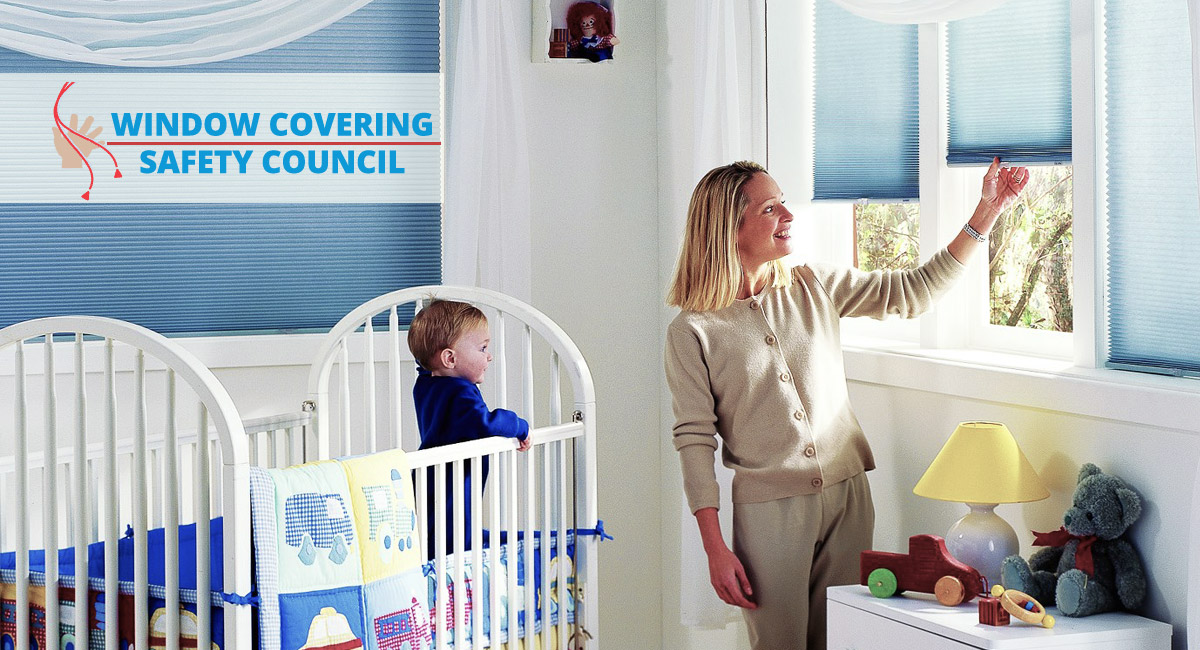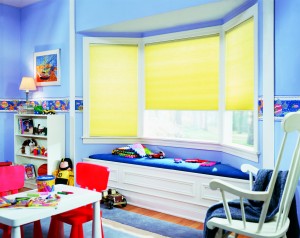Safely Decorating Kids Rooms
Apr 19, 2022
Avoiding Potential Hazards When Designing Rooms For Kids
Republished from WindowCoverings.org
Parents and parents-to-be have a million things on their minds when it comes to raising their children. But every parent needs to be aware of child safety, and this begins in the home.
Children’s rooms are the best place to start. According to child-safety experts, the typical focal points for decorating a child’s room — windows, cribs and bedding — also hold the greatest potential danger to a child’s safety.
To make sure your child’s room is a safe one, consider the following tips:
Childproof Window Areas
Never place a crib, playpen, bed or any type of low-standing furniture near a window. In exploring their surroundings, young children can accidentally fall through an open window or window screen, or become tragically entangled in a nearby window cord. Whenever possible, place cribs and furniture on a non-windowed wall.
 Dangling or accessible cords on window coverings can pose an accidental strangulation hazard to infants and young children. For safety’s sake, replace older corded window coverings with today’s safer products. The Window Covering Safety Council (WCSC) and government safety officials recommend that you only use cordless window products in homes with young children.
Dangling or accessible cords on window coverings can pose an accidental strangulation hazard to infants and young children. For safety’s sake, replace older corded window coverings with today’s safer products. The Window Covering Safety Council (WCSC) and government safety officials recommend that you only use cordless window products in homes with young children.
If you can’t replace your corded window coverings, you can order free retrofit kits from WCSC at www.windowcoverings.org. The website also contains a wealth of useful safety information for parents and caregivers.
Add Safety Around Cribs
Make sure the crib you are using is sturdy, properly assembled and in compliance with the latest safety standards. The U.S. Consumer Product Safety Commission (CPSC) cautions that crib mattresses should fit snugly, headboards and footboards should be without decorative cutouts, and corner-post extensions should be eliminated.
Heirloom cribs and hand-me-downs may not meet the latest safety guidelines, or may have dangerously loose or missing parts. The CPSC recommends consumers replace any crib that is 10 years or older with one that meets current safety standards.
Remember to place the crib on a non-windowed wall. Once a child is able to push up on his hands or knees, or reaches 5 months of age, the CPSC recommends removing any crib toys strung across the crib or playpen to avoid accidental strangulation.
Childproofing Bedding
Adorable as they may seem, crib comforters, bumpers, and baby pillows can pose a safety hazard. Safety officials caution parents not to place fluffy soft comforters or pillows in the crib where they might smother a baby. Consider a colorful mobile suspended from the ceiling, wallpaper borders, a patterned window valance or a cheerful color of wall paint as a satisfying and safer decorative focal point for baby’s room.
Making Other Room Elements Safe for Kids
Be sure to cover all electrical outlets. Consider open bins for storing toys. Children can easily injure themselves with hinged toy boxes. Purchase a spring-loaded lid-support device for a toy chest to prevent the lid from falling on a child’s neck or from closing and trapping a child playing inside the chest. Finally, make sure the changing table has safety straps. Baby powder, diaper ointment, and similar baby-care products should be accessible to the caregiver, but well out of the child’s reach.
So before you design your children’s bedroom, be sure to keep these helpful safety tips in mind!
Republished from WindowCoverings.org

